6 tips to perfecting a vegan pavlova
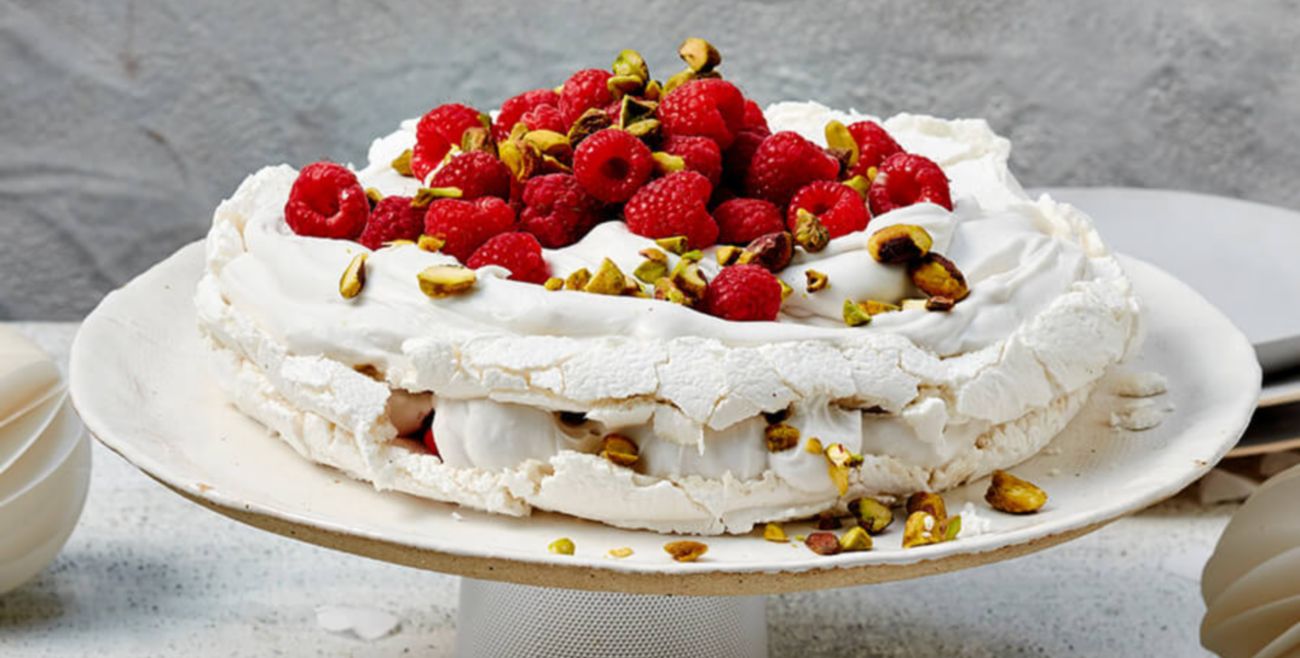
Tips and tricks to a great vegan dessert
Fancy a delicious dessert fit for a vegan? This vegan-friendly pavlova is just the ticket. Made with aquafaba — see below — rather than egg whites, this pavlova is whipped up in much the same way as a traditional recipe. These tips will get you over any glitches and make sure your vegan pavlova is as delicious as any pavlova you’ve ever tasted.
What is aquafaba?
Who would have thought that the liquid from a can of chickpeas could be so useful? Called aquafaba, a Latin name that translates to ‘water and bean’, this cloudy liquid has the ability to mimic the characteristics of egg white. Don’t worry, your pavlova won’t taste like chickpeas, just be sure to use an unsalted can so the flavour of your final pavlova isn’t salty.
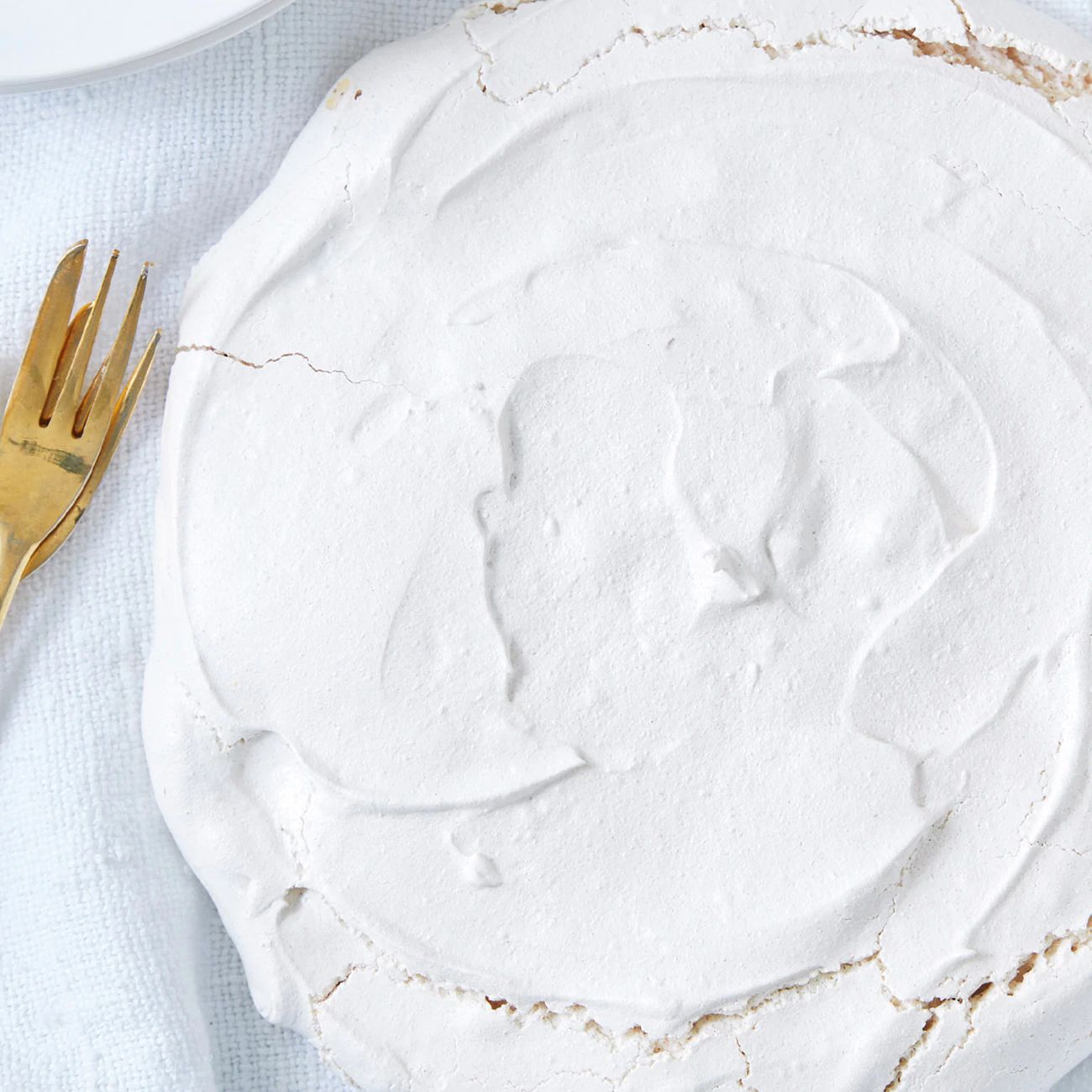
01
Make sure the aquafaba is chilled
Chilling the aquafaba will help it whip better. The ideal time to chill is overnight, but a couple of hours will be enough. Aquafaba can be covered and stored in the fridge for a couple of days. It can also be frozen and whips just as well when defrosted.
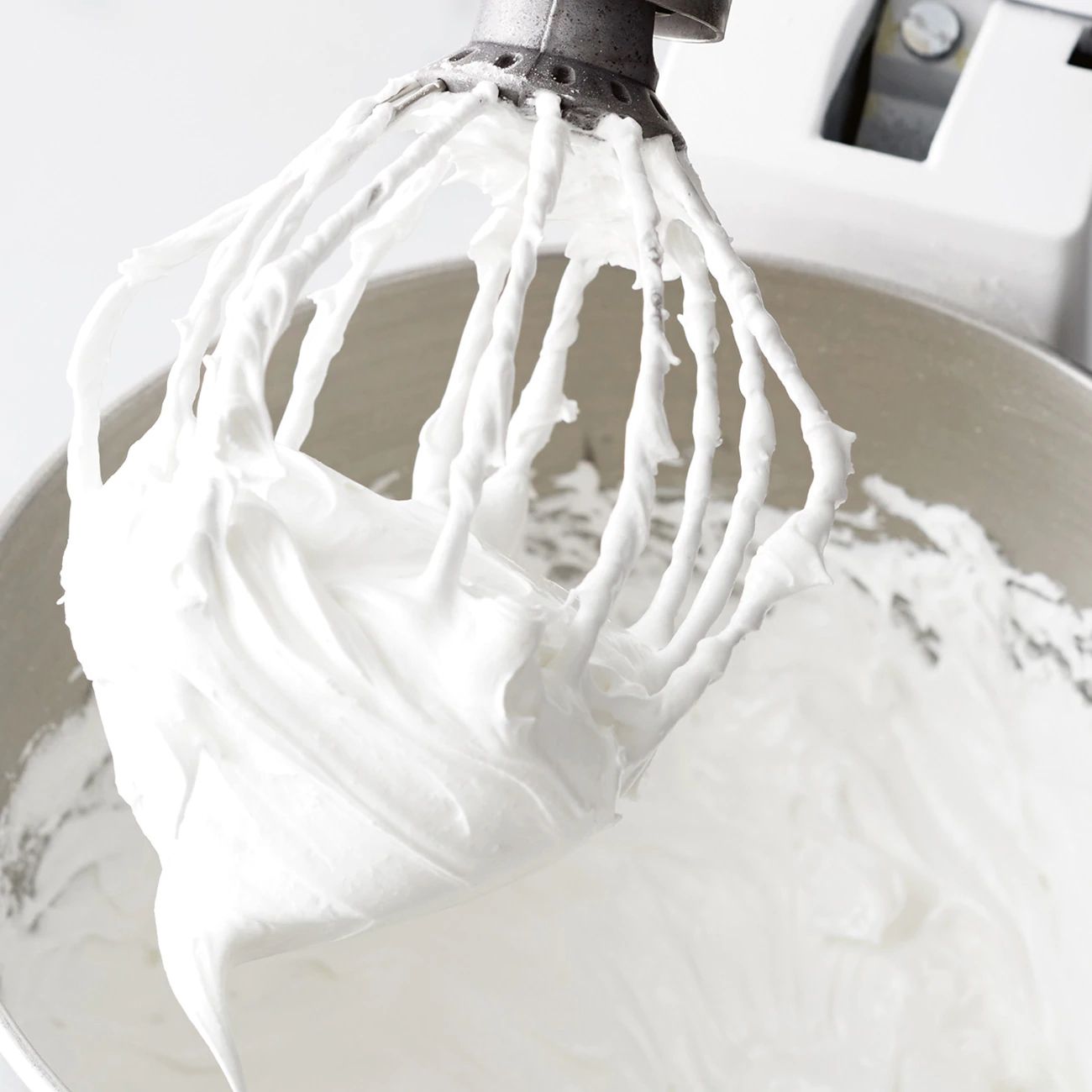
02
Whip it good
As with egg whites, aquafaba needs to be whipped at a high speed for it to transform into meringue’s signature pillowy mixture. Don’t add in the sugar until stiff peaks have formed, even if it’s taking longer than your recipe says. This is because other elements such as room temperature or beater power may impact your results, so don’t skip ahead until those peaks are visible! Under-whipped aquafaba simply won’t hold its shape when baked.
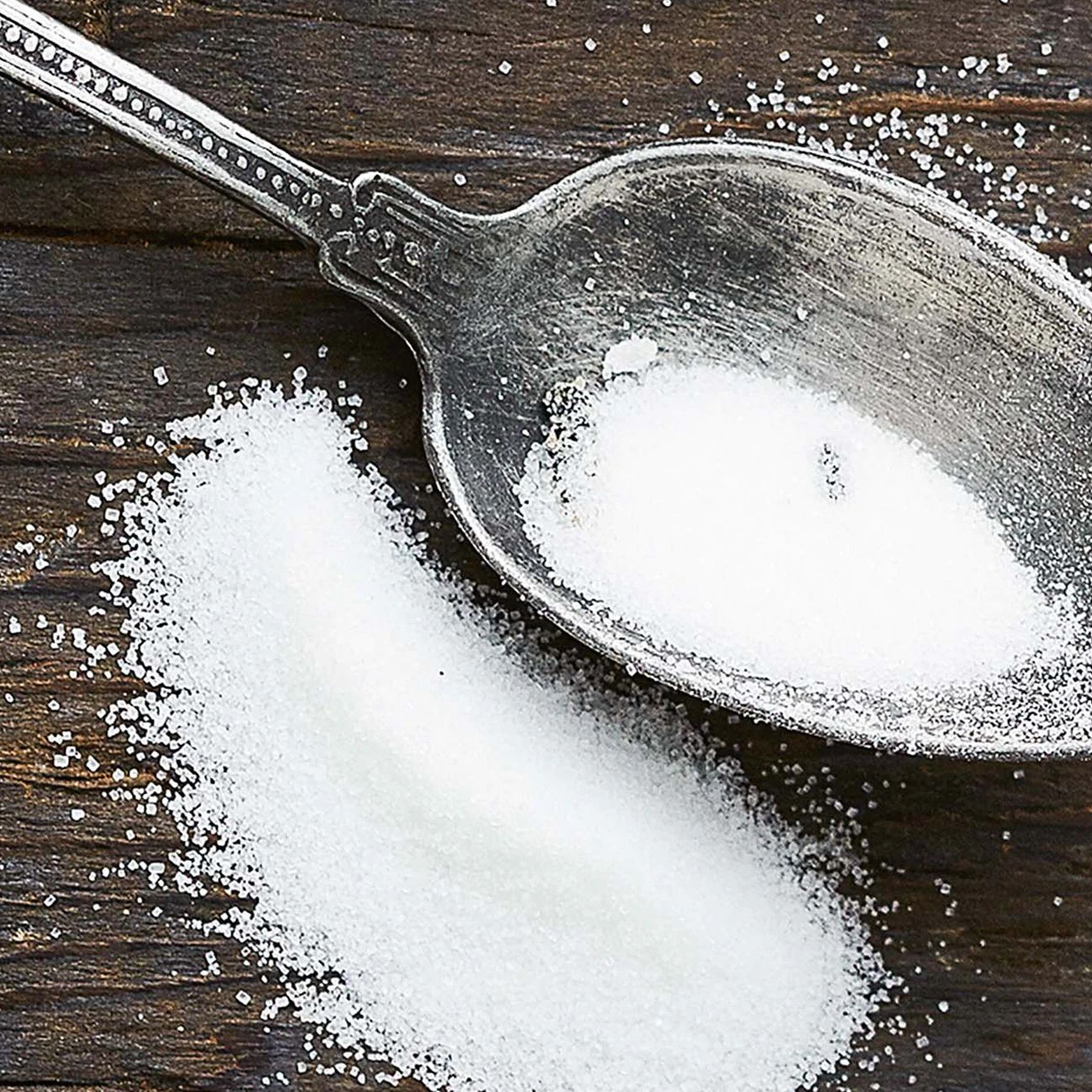
03
Avoid reducing the amount of sugar
It can be tempting to reduce the quantity of sugar in a recipe in the name of health, but altering the amount of sugar in a vegan pavlova will impact how well it forms. Make sure the sugar has dissolved into the aquafaba by taking a pinch of the mixture between your fingers and rubbing to feel for sugar granules. The cream of tartar also must not be omitted as it acts as a stabilising agent.

04
Oven temperature is key
The reason a meringue needs to be baked is to dry it out. The oven temperature should be kept low to stop the meringue from burning as it slowly dries out over a couple of hours. If a meringue begins to leak while in the oven, it may be a sign that the sugar hasn’t completely dissolved. It will still taste delicious, but maybe you’ll need to create an eton mess instead! If the pavlova begins to melt once removed from the oven, it means the aquafaba should have been whipped longer.
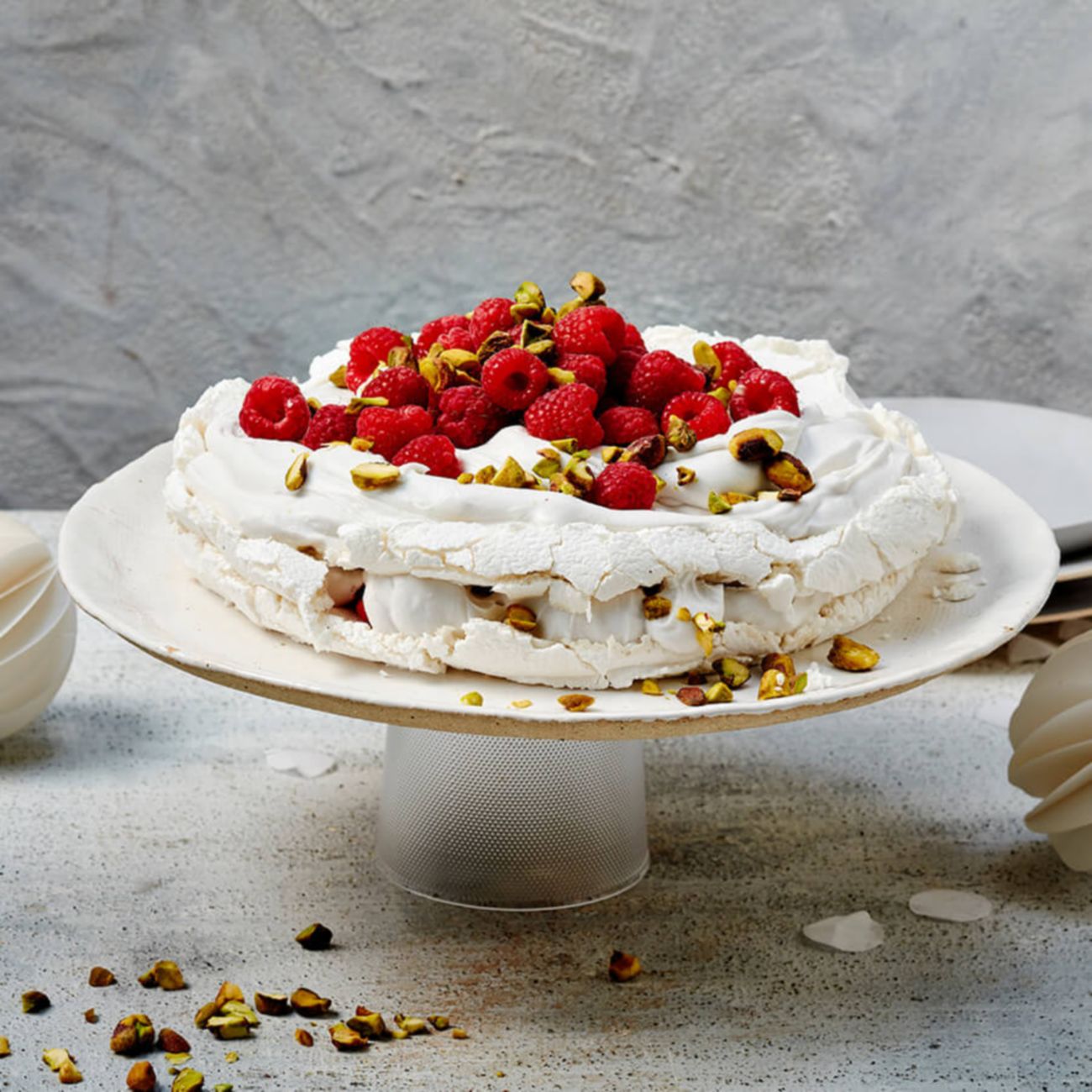
05
Serve sooner rather than later
An aquafaba pavlova doesn’t last as long as one made from egg whites. It is more easily affected by humidity and the meringue will soften if exposed to too much moisture. Serve as soon as cooled and add toppings right before serving.
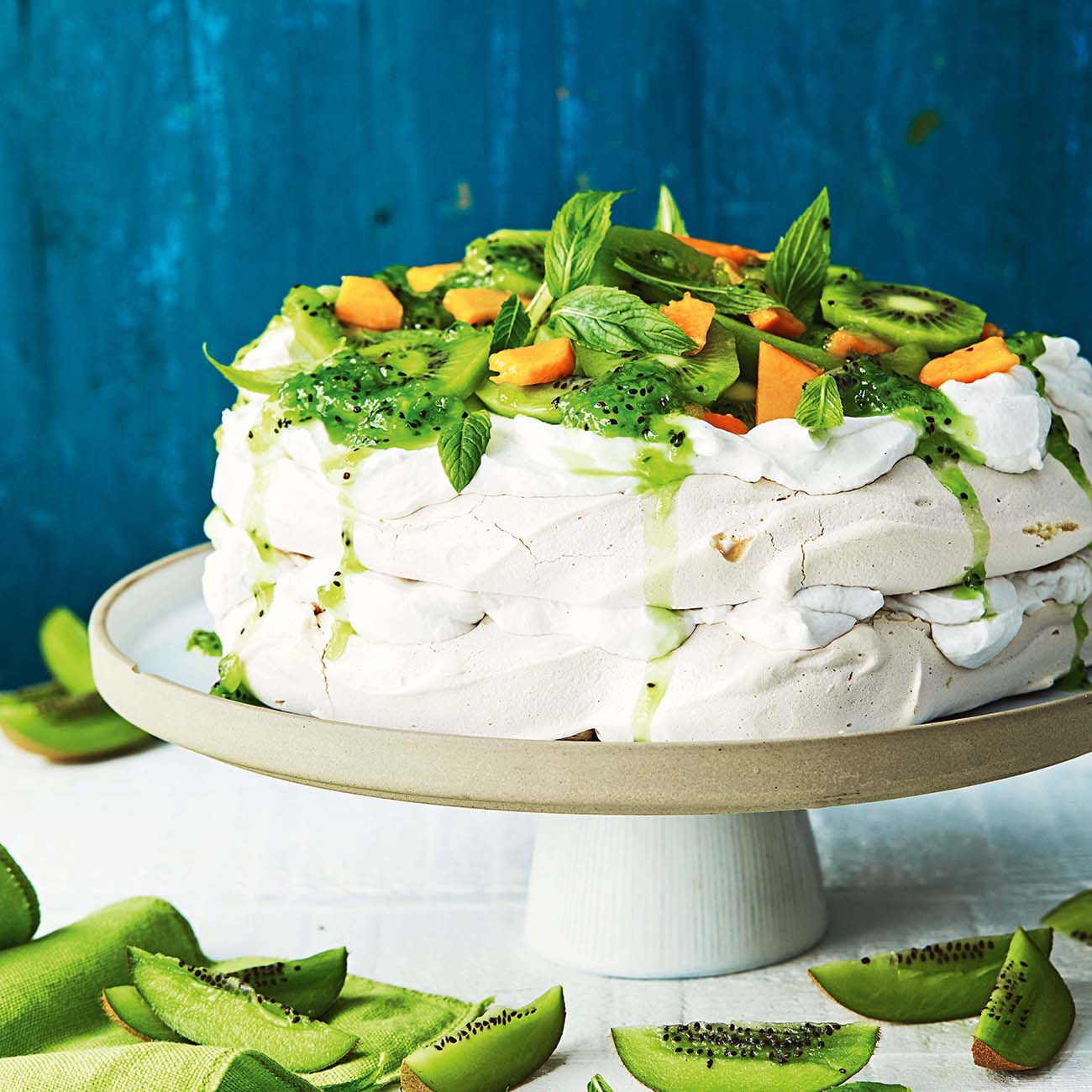
06
Enjoy!
Discover our go-to recipe for a vegan pavlova with pistachio and raspberries, perfect for summer dinners with close friends and family. Or go tropical with this vegan pavlova with kiwi fruit and paw paw recipe.
